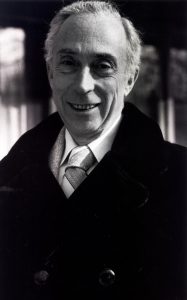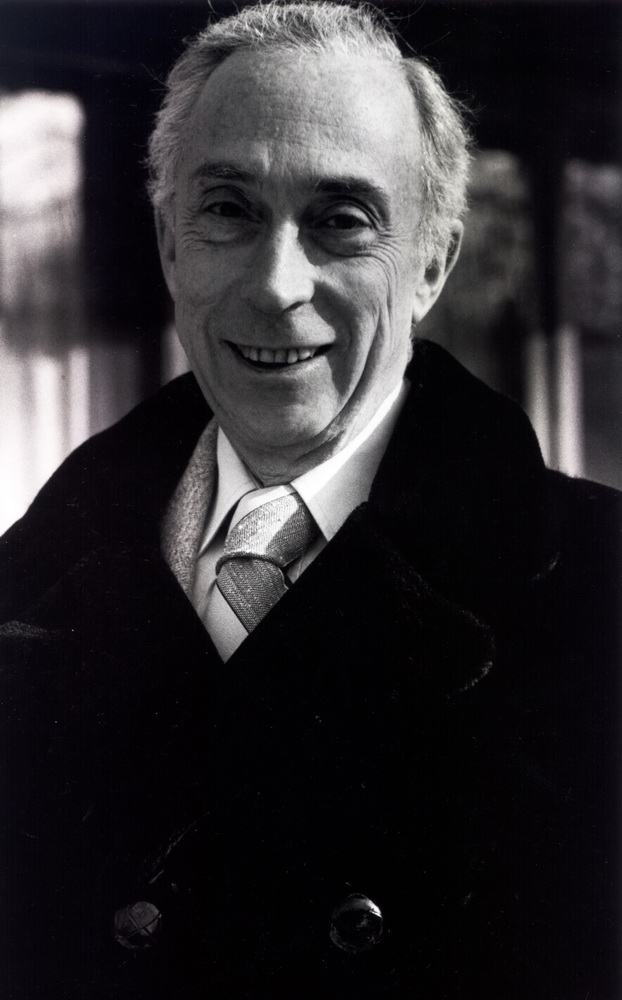The Significance of Dreams in a Dream Deprived Society

Montague Ullman, M.D.
(Date unknown, after 1996)
Oppression in art, as in life, is when the conclusion to be reached is predetermined by inner or outer a priori motives of how life or art ought to be.
Robert Motherwell
Civilization has posed a difficult task for the dreamer. Born into a society where dreams are of little or no social importance, the dreamer is left with few ways to satisfy a very natural curiosity to learn what the dream is saying. The result is a kind of emotional ecological loss to society, one in which so valuable a resource has gone unappreciated. Some day someone like Rachel Carson may come along to alert us to the price we are paying for this neglect. The repair will depend on the honesty with which we can face up to the general historical developments that have led up to this state of affairs and the current sociocultural forces that perpetuate it.
I won’t say much about the general factors. They are well known to us all. Setting ourselves apart from nature our efforts have been devoted to a mastery over nature, including our own human nature. In savaging nature, we ourselves have become an endangered species, if not physically, then in terms of our obvious failure to nurture and cherish every human being that lands on this planet. Instead of facilitating a spirit of connectedness, without which we cannot endure as a species, our rugged individualism has left the devil to take the hindmost. Nationalism, having outlived its usefulness, now stands in the way of repairing the fragmentation the human species has been subjected to down through the ages. Our dreams and the concern they show for the state of our connectedness to others and to ourselves can make no claim of importance in this outworn scheme of things. They await a new day.
As individuals we cannot easily resolve any of these general issues in the near future. We can, however, do more with regard to the specific issues that make it difficult to open the closet door. There are a number of hidden assumptions that perpetuate this difficulty. For the most part they derive from the lingering influence of a mystique that has grown up about dreams as a consequence of the foothold that classical psychoanalysis established in this country in the thirties. With that came an ideology that cast the dream in a light that all but made it forbidden territory to the ordinary mortal. To undo this inhibitory impact we have to see it for what it is and take what steps we can to bring forth a new and more felicitous vision of the gift our dreaming psyche offers so freely.
Jung took the first step in this direction. The respect he showed to the dream freed it from its regressive prison, got rid of its jailor in the form of the censor, and made for its freer existence beyond the limiting domain of wish fulfillment. It is Jung’s vision of the dream rather than Freud’s that attracts the attention of the current generation of dream explorers. Erich Fromm accorded the language of the dream its full due. In a clear break with the way the dream was enmeshed in the Oedipus myth and other facets of Freudian theory, he viewed the imaging mode of the dream as a unique and distinctively human attribute that creatively reflected the psychological forces that impinge on our lives. Although paving the way toward a broader usage of the dream outside the framework of therapy, the steps necessary to implement that usage was a task for a later generation of dream workers.
In sum, the mystique of dreams in the mind of the public included the regressive view of the dream, the dream as the container of a cauldron of id impulses that threaten to erupt unless properly censored, the predominant role of wish fulfillment and sexuality, and finally, the need for someone psychoanalytically trained to interpret the resulting symbolism along tracks laid out by psychoanalytic theory. There have been major revisionist theories in psychoanalysis over the years that have moved away from the overarching role Freud attributed to instinctual drives and childhood wishes. These new approaches continued, however, to foster the cult of the expert and perpetuated the idea that formal therapy provided the only safe and effective way for the dreamer to engage with the dream. To challenge the premises underlying this mystique was to court danger. While theory may be helpful to a clinician as a way of highlighting trends in the developing life history of the patient, it can often be misused when it comes to dreams.
Viewing the metaphorical imagery in the framework of a particular theoretical orientation tends to foster an a priori approach to the imagery, the very thing Motherwell warns about.
The thrust of my professional endeavors for over three decades has been to do what I can to dismantle this mystique. In concert with a number of other workers I have addressed the general public concerning my conviction that access to dreams should be made available to all and I have suggested ways of approaching the task. The mystique I referred to is blind to the basic premise of this approach, namely, that dreaming is a universal phenomenon and should be universally accessible. It does not take into account the natural curiosity we all have about our dreams, a curiosity that betrays our intuitive sense that our dreams have something of importance to say to us. There is an active resistance by many therapists to what they correctly see as an attempt to deprofessionalize dream work. Having established a beachhead in the minds of the public that it requires an expert to decipher the symbolism of dreams, they have thus far been reluctant to forgo their privileged position.
If we were to project a utopian vision in which society were to give full cognizance to the healing potential of our dreams, what steps are within our power now to move toward that ideal? A first step would be to bring dream work into the educational system, beginning at the grade school level and making it an intrinsic part of the educational process at all levels. A few adventurous souls have experimented with this in the lower grades with encouraging results. I have had some experience with it at the high school level and, despite the special problems adolescents have about revealing their inner selves to their peers, I felt dream work was feasible and could be particularly helpful during this critical phase of development. Richard Jones pioneered a productive approach to dream work at the college level. In his book, The Dream Poet, he describes his experience of integrating what he refers to as “dream reflection” into a course on literature. As the students became familiar with the unique and expressive metaphors they were creating in their dreams, they not only responded more deeply to the classics they were reading, but their own writing became more original and more powerful than what might have been expected from their grade level (second year students). Similar work has been taken up at a number of different colleges. Edward Storm, a professor of computer science, brought dream work into a beginning course in computer science as a way of introducing students to the nonlinear analog attributes of dream thought. Important as these efforts are, they were nowhere on a scale commensurate with the educational potential that would accrue from an integration of dream work into the college curriculum.
It is time for the dreamers of the world to unite and break the theoretical chains that bind them to the cult of the expert and makes them passive participants in maintaining the mystique. What are dreamers being exhorted to do? First and foremost is to assume some responsibility to change the situation. This will involve both a program of education and of action.
Basic dream work should and can be taught outside of any particular theoretical frame of reference. I stress what I consider to be the three important phenomenological features of dreaming consciousness, namely, the relevance of its content to current issues in our lives, the retrieval of information from the past that is emotionally linked to these current concerns and finally, the profoundly honest way our feelings come through in the imagistic narrative we compose.
The dream presents a dreamer with the opportunity to move into the “becoming” aspect of his or her life. This entails certain unknowns and will often challenge a pre-existing emotional status quo. A dream, arising out of an unconscious domain, is now a challenge to the dreamer in the waking state. We are dealing with a raw product created primarily to meet the needs of the sleeping organism. A fish pulled out of the sea has to be cooked. A dream surfacing in the waking state has to be worked on for its message to be brought to life. For this the dreamer needs help in the form of a supportive and stimulating social context. That help is needed in the translation of the pictorial language and needs support in the owning of its content. Few of us can be as consistently honest with ourselves in the waking state as we are when we confront the imagery of the dream. Dream work flourishes in a group arrangement where everyone, including the leader, participates in every aspect of the process, including the sharing of dreams. A flat, nonhierarchical structure results. This, in conjunction with the fact that the dreamer is respected as the guardian of his or her unconscious and is the sole determinant of the level of self-disclosure, generates the sense of trust essential to the pursuit of so intimate and private an experience.
One way to approach understanding dreaming consciousness is to consider the way it differs from waking consciousness in both the language or form of the mode of communication and the nature of the content being communicated. The form is strikingly different from our waking thoughts. We move into a concrete sensory mode predominantly but not exclusively visual, and endow the imagery with the metaphorical power to reflect the subjective aspects of current concerns. We spend a good part of our sleeping time manufacturing visual metaphors that tell us how we really feel about ourselves, about others and about the immediate predicament we find ourselves in. If we are able to spark across the metaphorical gap and retrieve this content while awake, we become more truly in touch with ourselves. Our nighttime images are perceived as real at the moment. Their metaphorical power comes to light only when we take the time to explore their reference to our life. The waking discovery of the relevant life experience completes the metaphor.
Let us look more closely at the language of the dream. Once we free a dream from any extrinsic and superimposed theoretical considerations we are free to examine that imagistic language in its pristine state. When we go to sleep we shift from discursive speech to what I have referred to as metaphorical imagery in motion. We adopt the persona of the poet in a way that reflects the idiosyncratic emotional currents and express them not in words but in images that are uniquely our own. Regardless of how uncreative we may consider ourselves to be in our waking lives, the poet in each of us comes to life when we are asleep and dreaming. Unlike the poet who rearranges words in the search for the apt metaphor, we pictorially rearrange bits and pieces of our past experience and cultural heritage. We create visual metaphors that speak so precisely and so eloquently to whatever it is that we are feeling at the time.
The dream, in effect, is an aesthetic response to our predicament. I do not mean to imply that a dream is a work of art despite the fact that many dream images may be intrinsically beautiful and could become a work of art were they to be transformed into one or another enduring medium of expression. A work of art involves a good deal of energy and effort, sometimes extending over periods of time before it comes together in any final form. By way of contrast, the final product, the dream, appears spontaneously. No self-consciously directed energies are involved. It appears as part of a natural rhythm that occurs during sleep, a rhythm rooted in evolutionary processes. Once the dream is made to reveal its secret, its own internal logic becomes obvious. Then, and only then, can we appreciate how directly and precisely apropos it is as a carrier of immediate felt concerns.
In using the term secret, I do not wish to imply that a dream always has a secret to reveal. Sometimes it is quite transparent. There are many instance when solutions to problems and inventive ideas appear in a dream and are grasped immediately. More often than not the dreamer, on awakening, has only a limited access to his or her own creation, and sometimes none at all.. The greater our sense of metaphor, the more we might be able to connect with the imagery. The difficulty does not lie in the metaphorical language per se but, rather, in what that language is saying. Awake, we are not always as prone to the same level of honesty as we are while dreaming. As actors in the social scene, our unconscious defenses take over in the interest of maintaining our social persona. While awake, expediency often replaces candor in our efforts to protect a self-image. We have ways of not seeing what we don’t wish to see. While dreaming we see what is really there to be seen.
The REM or rapid eye-movement stage of sleep and the associated episodes of dreaming are anything but a phylogenetic atrophic remnant like the appendix. By exposing predicaments arising defensively out of expediency or simply out of ignorance, this unique form of consciousness sounds a clear moral tone. Were we to take seriously the need to learn how to close the gap between image and reality we could benefit from the truth being exposed. Dreams are an ally in the effort to extend our range of moral freedom in the choices we are called upon to make.
Here I have to turn to moral philosophy for help. The point of view I have found most congenial in sorting out the issues involved is that of Mary Midgley. If I read her correctly, she buttresses common sense (it is in our nature to want to be more moral than otherwise) with Darwin’s theory of evolution. She rejects any fatalistic view of human nature and links freedom to morality but not in any idealistic sense. Moral choice is contextual and linked to the specific circumstances and constraints in which that choice arises. The important point is that the choice is always there whether we know it or not. The constraints arise out of our individual life history and endure to the extent they are reinforced by existing social and institutional arrangements.
I am, in effect, postulating that we all possess an incorruptible core of being that makes its presence felt while dreaming, more dependably than while awake. I have referred to it as an ethical aperture, likening it to the aperture of a camera which opens more widely in the dark (asleep and dreaming). The aperture itself cannot ensure a good picture, but if properly set it allows for the best possible picture to emerge given the circumstances under which the picture is taken. Analogously our dream enables us to discern more clearly the circumstances involved and degree of freedom we have in making a moral choice. The dream aperture automatically sets itself to provide the information needed to ferret out the most moral choice available. It is up to us to develop the picture and do the work necessary to become conscious of that choice. The dream itself cannot make us do it. Our dreams are not enforcers.
Dreams have a range that takes into account the fact that the individual is a point of concentration of a complicated array of social forces, many of which operate outside of awareness. Just as personal referents in the dream reflect issues unique to the dreamer, social referents reflect issues that remain unsolved in a given society. Racism, sexism, ageism and other isms are still with us. Swept under the rug, they find their way into our dreams.
In the following example a blatantly sexist childhood casts a long shadow:
A woman in her late thirties is about to embark on a new relationship. She feels some hesitancy and has a dream that displays some of the roots of her ambivalence. At one point in the dream she sees her father sitting on a swing with four female relatives, all in their heyday, dressed almost like cancan girls. What emerged from the dream work were two powerful memories that surfaced from her childhood to influence her approach to a new relationship. One was that of the male, derived from the image of her father, as privileged to flirt and play around with other women. The other was that of the female victimized by the profligate male, as her mother was. These are images that she is still struggling with. In a larger sense they relate to the residues of sexism. The privileged male and the victimized female are still available social stereotypes.
In the next example the dreamer identifies with the victims of racism in her own struggle against sexism. A very experienced and competent manager, her voice is rarely heard by the men above her.
Irma is a 50 year old white woman who presented a dream, the key features of which were that she was with a group of children and an African-American mother on a bus in which she tried out one of the seats in the back. A little boy was speaking to a man. His black mother was angry because she didn’t want her black boy speaking with a white man who would be a bad influence.
Irma’s thoughts centered around her identification with the strong black mother. Her recent relevant day residues arose out of events at her work place. She is in a middle management position. “Those above me have all the arrogance of ‘the old boys club'”.
Women were second class citizens in her childhood home, controlled by a very dominant father whose strict religious teachings drew a very sharp line between right and wrong. That line was more favorable to her brothers than to her.
In my workplace I felt like the underdog. If I `speak up’ maybe I will eventually learn that a strong voice will not always be perceived by men as aggressive. Being born ‘black’ I had to have the ability to contain myself and still struggle to maintain my self respect and respect for my ideas. I have felt an affinity to black women all my life.
The deeply felt mesh of the personal and the social was laid bare by the image of her taking a seat in the back of the bus. A current issue at work led back to her life long struggle to free her intelligence and spirit from the limiting structure of her family life as set down by her father. Her growing self-confidence enabled her to take a step that not only upset a given status quo, but led to her resignation and a successful venture on her own.
The identification of the social referents in their specific relevance to a recent issue at work makes the connection between the social and the personal explicit and reciprocal. The connection becomes reciprocal when insight into the social scene sets in motion the hope of coping with her own disenfranchisement. In her ruminations about the dream in the week after she presented it, she felt the plight of the African-American woman on the bus was a “parable for my entire life experience, oppressed as it was by the strict regime my father and his religious beliefs imposed on me.”
Irma’s final comment was about her identification with the black woman.
I like the idea that came up that I was born a black woman. It goes beyond the events of the past week. It goes back to my relationship with my father.
To the extent we remain unaware of the power of such internalized prejudices, our moral freedom is compromised. Any threat to moral freedom is ultimately a threat to enduring and collaborative ties among the constituents of a given order. We are members of a species that has survived thus far by virtue of our social attributes. If those attributes continue to deteriorate and we fail to reverse the moral morass growing so alarmingly at a community, national and international level, we are in for a difficult time in ever unifying the human species.
Our dreams thus serve a dual purpose. Their personal referents speak to the emotional baggage we carry around from our childhood. The social referents speak to the way certain social arrangements and institutions constrain our lives. One of the pitfalls common to industrial societies is the tendency to reduce human beings to objects, the personal attributes of which are useful in the marketplace. In the wake of recent examples of corporate psychopathy, workers thrown out of work come to the sudden realization they are no more than disposable objects.
In the following example, this “objectifying” trend is played out in the sexual life of a young woman:
When a woman dreams of a reference to her sexual organs as a head of lettuce encased in the empty shell of a cantaloupe sitting on the shelf of a supermarket she is saying something about her own personal sexual problem (frigidity) and, at the same time, making a statement about an aspect of social life. The personal referents arouse our interest, but the social referents are generally not pursued to any great degree. Briefly, the personal referents are:
- Sexual organs are seen as separate from her functioning self.
- Sexual organs are seen as objects.
- The object is made of completely closed leaves encased in a shell.
- The objects can be bought and sold.
- There is an anonymity to objects on the shelf of a supermarket.
The real-life situation to which this symbolism alludes may be noted as follows:
- Involvement in a situation of incipient sexual activity that occurred apart from her own will and intent and at the instigation of her husband.
- Reactions of irritation, guilt, and constraint.
- A resolution through pseudo-acquiescence and preparatory sexual activity involving the use of a diaphragm.
The social referents may be similarly noted:
- We live in a society where the capacities of people are sometimes treated as objects divorced from the person: labor, brains, beauty, talent, sex.
- These separated capacities are bought and sold.
- The exchange value and laws of the marketplace tend to make the transaction automatic and impersonal.
- There exists in the nature of the external referents a detachment or separation of the individual from the commodity she is called upon to use. Her real relation to the commodity is determined by its manifest elements — the object exists as something apart from herself which may or may not be purchased.
Our own humanity thrives best in an atmosphere of affectionate and cooperative ties to others. Dreams provide us with an opportunity to explore, understand and change whatever may be in the way of establishing such ties. In this respect I believe our dreaming consciousness goes beyond a concern for the individual and arises out of a more basic concern, namely, the survival of the species. One of the unfortunate byproducts of the historical evolution of human society is the enormous fragmentation that has occurred among members of the human species and the terrible tensions that have been associated with this fragmentation. We need only mention, as examples, religious, racial, sexual and economic class distinctions, in addition to accidents of geographical separation and differentials in cultural evolution.
While as individuals we may concern ourselves very little with the integrity of our connections with others, pursue an unsavory way of life, run roughshod over others and still live to a ripe old age, it is becoming more and more unlikely that we will survive as a species unless we can get our act together and learn how to surmount the historical fragmentation that has occurred. Dreams can provide us with one more tool in the struggle to repair and maintain that sense of species-connectedness so essential for our survival.
What is needed at present is a drastic revision of our view of the importance of our dream life. Dreams are very low in the list of social priorities. We do not introduce dream work into the family or educational system. As adults we are left to our own devices to satisfy our natural curiosity about our dreams. The only socially sanctioned arrangement for dream work is the therapeutic situation where we pay someone to help us with our dreams. All of us are dreamers and not all of us need therapy. Where can the rest of us go? Dream dictionaries? They are more often misleading than helpful.
The knowledge and skills necessary for effective and safe dream work can be identified and taught to anyone with sufficient interest. There is a growing awareness that this is so and that the time has come to open the door to the lay public. Were dream work to be socially upgraded and the proper arrangements made for extending it into the community we would not only provide the individual with a vehicle for personal growth but we might also catch a glimpse of the underside of our own social order and its emotional impact on each of our lives.
Cultural anthropologists have looked at dreams as mirroring aspects of primitive societies. We have hardly begun to scrutinize the influence of our own social order on our dreams. Were we to do so, I believe that interesting relationships would emerge. In preliterate societies today, for example, there is a niche for dreams as an important intermediary between cultural, religious, and historical influences on everyday life. In antiquity, notably classical Greece, this interest in dreams was also noted. In both instances, there was a certain symmetry between the personal and the social that served a unifying, cohesive function. The situation began to change in ancient Rome as monotheism took over. The link was finally severed in western Europe in the middle ages with the occurrence of two historical developments, the invention of the printing press and the consolidation of the power of the Church. The first made dream books, mostly oriented to mantic practices and divination, available to the laity. The second resulted in disparaging even to the point of proscribing the circulation of such books. In the eyes of the Church, mystical visions and dreams were linked.
Both could be the work of either divine or satanic influences. Since the laity could fall prey to the latter, it was felt that dreams and visions should remain under the domain of the Church as the only power that could vouch for authentic divine influences. This concern with the vulnerability of the laity to demonic influences ultimately led to the persecution of witches.
The Industrial Revolution marginalized dreams. It was the last blow to any hope that our dream life would find its own natural haven in society. Objective mastery of the external world far outstripped any realistic social investment in the subjective mastery of ourselves. Dreams had no significant social valence. With Freud the universal phenomenon of dreaming found a limited place for itself in a profession dedicated to the art of psychological healing. The public was left to shift for itself with regard to their dreams. Universal accessibility to something so insistently a part of everyone’s life has remained a mirage for all but a handful of oneirophiles. In the laboratory we have learned how to deprive people of dreams by keeping them awake from the onset to the end of the successive stages of the dreaming cycle. Without giving it a second thought, we have managed to live out our lives in a dream-deprived society.
The closing decades of the last century witnessed the appearance of a truly new phenomenon, namely, people gravitating toward dream groups led both by professionals, including a scattering of psychoanalytically trained therapists, and laity. While at this point these groups are only barely visible dots on the landscape, there is every indication that this movement will grow. That growth will depend on how safe and effective these groups turn out to be. Currently, there are more people seeking such groups than there are groups to accommodate them.
Every member of our species is a dreamer. If dream work had a higher social valence than it now enjoys, might it, in the way it addresses the micro-level of individual relatedness, make a contribution toward remedying relatedness within the family and the community? Once dreaming consciousness is more generally recognized as constructively complementary to waking consciousness, and were that complementarity ever to gain a foothold in the public domain, it just might open up one more pathway to a more humane social order. There have been and still are societies that have integrated dream work into their culture.
In sum, our dreams, when consciously pursued, are a kind of emotional connective tissue bonding us as social animals. If we take the trouble to permit those nocturnal visitations to find their place in our waking world, they can provide us with a starting point in the continuing struggle to transcend our limitations. The nature of our interdependence is such that, as personal connections evolve more solidly, there are effects that reverberate upward toward ever larger social units. Dreams can point us in the right direction. They reveal our strengths, acknowledge our weaknesses, expose our deceits, and liberate our creativity. They deserve far greater attention than they now receive. As a psychiatrist, my concern is with personal truth. One road I have taken in pursuit of this has been to attempt to demystify dreams in a way that would make the personal honesty embedded in the metaphorical images of our dreams available to all. There should be universal access to the benefits that can accrue from them.
For too long the public has been taken in by the prevailing mystique that serious dream work had best be limited to the clinical domain. Our dreaming psyche arises out of an incorruptible core that, in contrast to our waking ego, has never lost sight of the fact that we are members of a single species. Our ability to endure as a species may depend on taking that fact more seriously than we have in the past. Dreams reveal the state of connectedness of the individual to his or her past, to others, and to the supports and constraints of the social order. Is it too much to hope that, as we move into a postindustrial society, the intrinsic honesty of dreams can be harnessed to this effort?
We are in need of a politics of connectedness. The growing interest in the healing potential of our dream life holds out the hope we may eventually reach the goal of matching our biological unity as a species with a cultural reality of communion and brotherhood. My point is not that dreams will save us from ultimate disaster but they can, if taken seriously, be one among many countervailing efforts.
REFERENCES
Fromm, E. (1951). The Forgotten Language. New York: Rinehart & Co., Inc.
Jones, R. (1979). The Dream Poet. Boston: G.K. Hall & Co. Jung, C.G. (1933). Modern Man in Search of a Soul. New York: Harcourt, Brace & World, Inc.
Midgley, M. (1994). The Ethical Primate: Human Freedom and Morality. London and New York: Rutledge.
Storm, E. (1988). “Dreaming and learning: The dream in a college classroom.” In M. Ullman and Claire Limmer (Eds.), The Variety of Dream Experience. New York: Continuum.
Ullman, M. (1996). Appreciating Dreams: A Group Approach. Thousand Oaks, California: Sage Publications.
Montague Ullman
1916 – 2008
Dream Appreciation Newsletter Articles
This site is dedicated for the legacy of Montague Ullman’s dream work, consisting of Ullman’s own writings he wanted to be included in this site.
—-
All Images By Pixabay




















